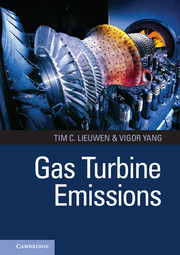Book contents
- Frontmatter
- Contents
- List of Contributors
- Foreword
- Preface
- Part 1 Overview and Key Issues
- Part 2 Fundamentals and Modeling: Production and Control
- 5 Particulate Formation
- 6 Gaseous Aerosol Precursors
- 7 NOx and CO Formation and Control
- 8 Emissions from Oxyfueled or High-Exhaust Gas Recirculation Turbines
- Part 3 Case Studies and Specific Technologies: Pollutant Trends and Key Drivers
- Index
- References
5 - Particulate Formation
from Part 2 - Fundamentals and Modeling: Production and Control
Published online by Cambridge University Press: 05 June 2013
- Frontmatter
- Contents
- List of Contributors
- Foreword
- Preface
- Part 1 Overview and Key Issues
- Part 2 Fundamentals and Modeling: Production and Control
- 5 Particulate Formation
- 6 Gaseous Aerosol Precursors
- 7 NOx and CO Formation and Control
- 8 Emissions from Oxyfueled or High-Exhaust Gas Recirculation Turbines
- Part 3 Case Studies and Specific Technologies: Pollutant Trends and Key Drivers
- Index
- References
Summary
Definition – Smoke/Soot/Carbonaceous Emissions
Carbonaceous materials emitting from the exhaust of gas turbine engines are frequently referred to as soot emissions, nonvolatile particulates, or smoke. Frequently, these terms are used interchangeably. Such emissions typically consist of single particles ranging from 10–80 nanometers that may agglomerate into a complex fractal chain structure with much larger dimensions. A series of photomicrographs from transmission electron microscope (TEM) analysis at different levels of magnification for a combustor operating at 80 percent power is shown in Figure 5.1.
These carbonaceous soot particles should be contrasted with volatile particulates (see Chapter 6), although volatiles may condense onto soot particles. In particular, soot particles can act as carriers of condensed polycyclic aromatic hydrocarbons (PAHs), some of which are carcinogens. Additional discussion of these subjects can be found in this chapter and in Chapter 6 of this book. Recent results indicate that the morphology of these soot particles may change with power levels and even fuel makeup (Anderson et al., 2011).
- Type
- Chapter
- Information
- Gas Turbine Emissions , pp. 123 - 153Publisher: Cambridge University PressPrint publication year: 2013
References
- 2
- Cited by



